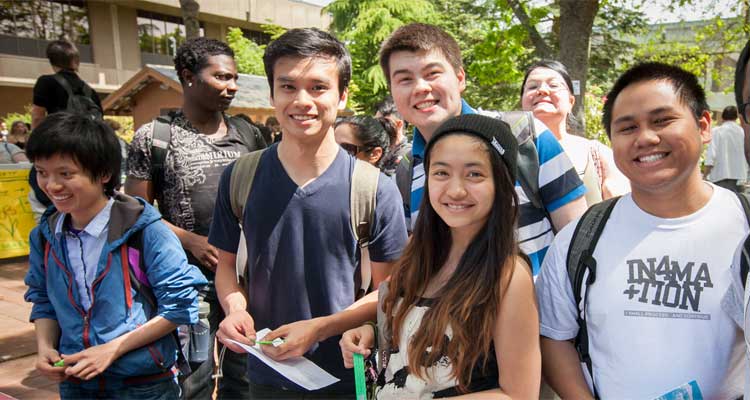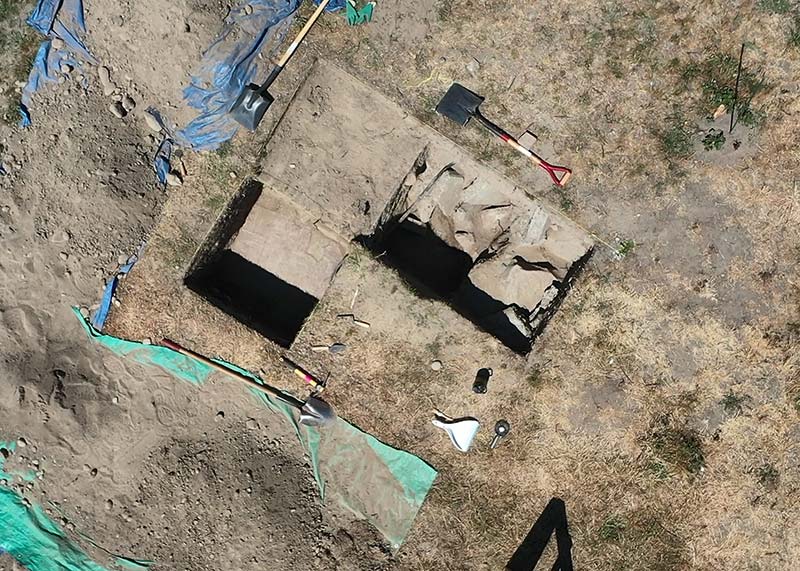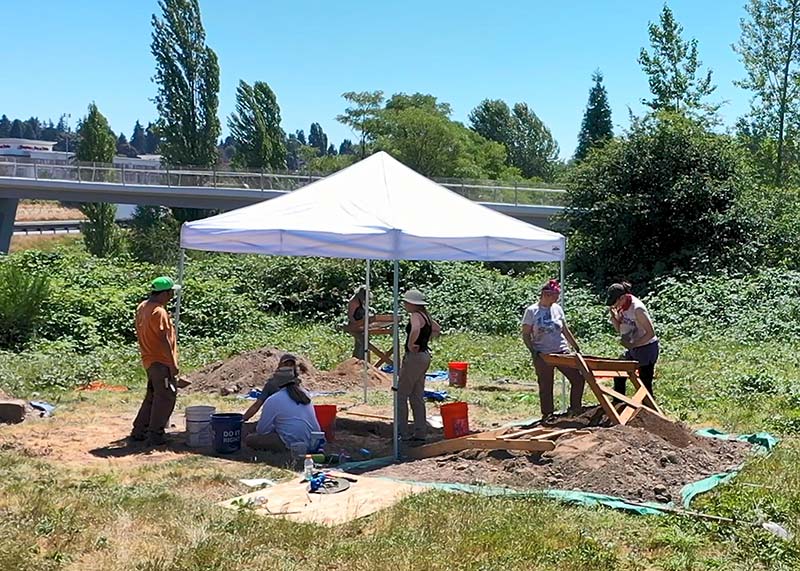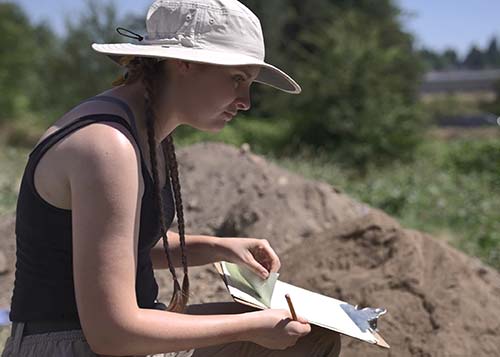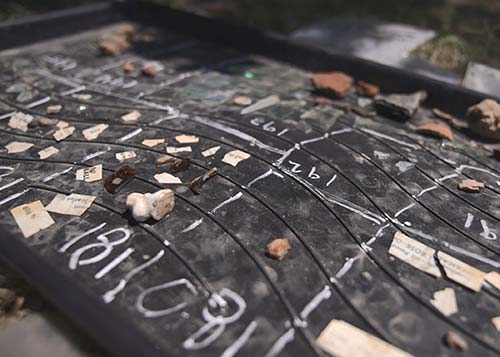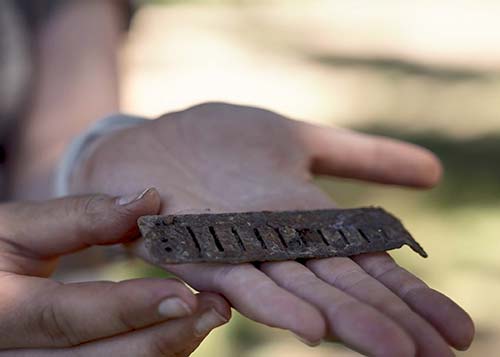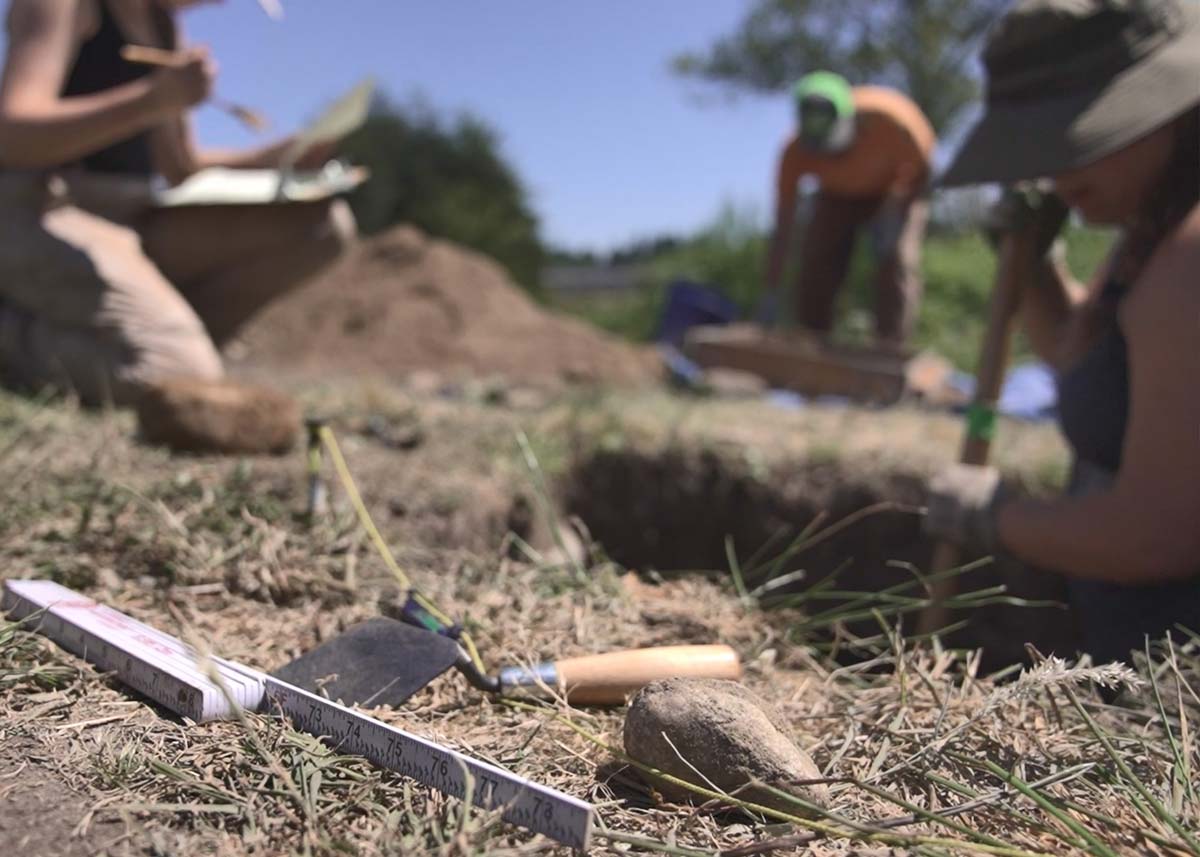
Digging Into the Past
Edmonds College faculty led archaeology excavation of historic Japanese community site in North Seattle
Tucked away adjacent to North Seattle College, bordering the bustling southbound lanes of I-5 and the new pedestrian bridge that leads commuters to and from the Northgate light rail station, sits a historic piece of land that was once a hub for the Japanese community. This natural greenbelt was the location of the Green Lake Gardens Company, run by the Kumasaka family, who also lived at the site from 1919 until 1968.
Edmonds College Anthropology Department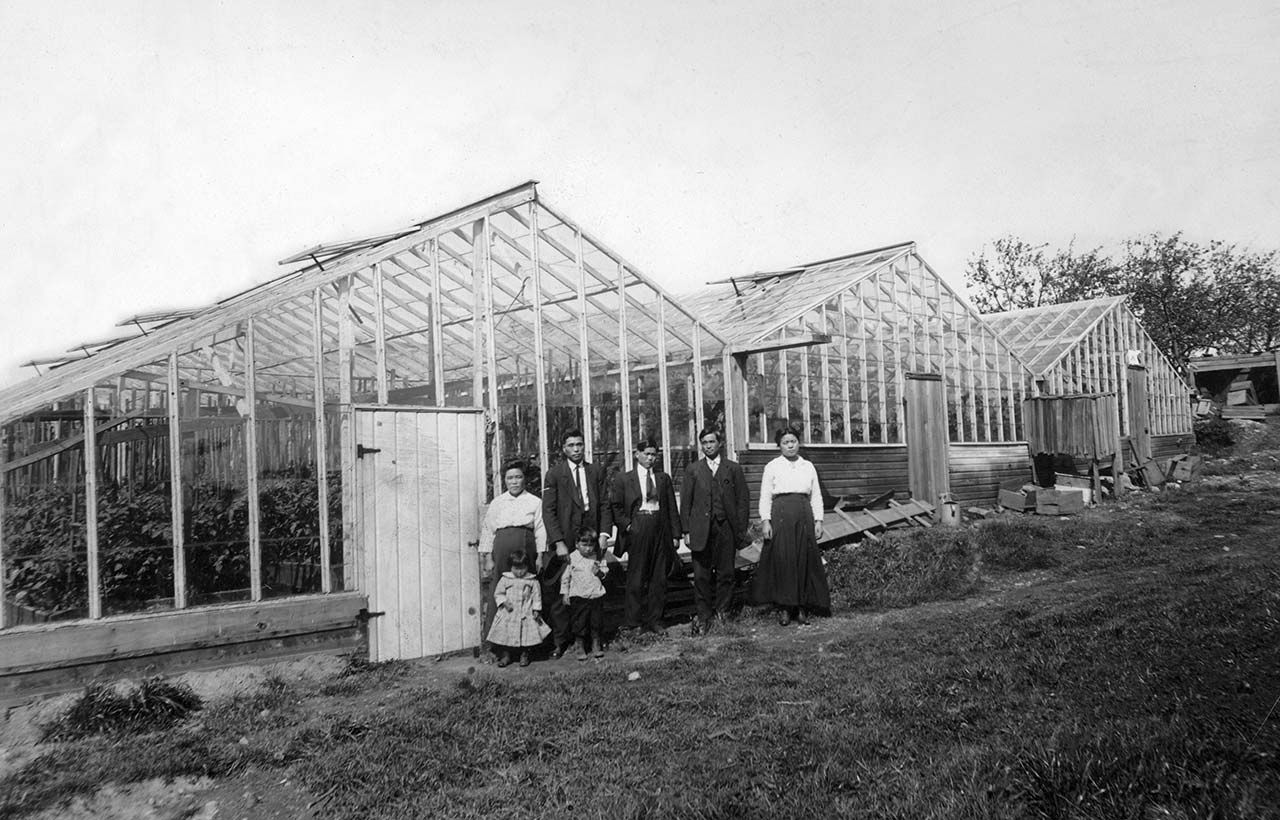
By the late 1930s, many Issei-operated floral greenhouses existed in the North Seattle
area. The flowers were sold at Seattle's Public Market, retail stores, and wholesale
companies. Photo Courtesy of the Kumasaka Collection.
There are few visible remains of the Green Lake Gardens Company and Kumasaka residence today. It is now a park and nature area owned by North Seattle College. Any signs of life and the buildings that occupied the land are razed, obscured by vegetation, or buried beneath the soil.
The Kumasaka family lived in and ran their business from several buildings that once occupied the land, including a large farmhouse, a small apartment, several outbuildings and sheds, and several greenhouses. The property had a variety of fruit trees, and their front yard was used for planting, with vegetable gardens throughout the property. The Green Lake Gardens Company grew flowers and vegetables in a series of greenhouses and utilized the acre and a half behind the 1910 home for truck farming.
In the corner of the property, there once sat a community center that served as a safe haven for the Japanese community of North Seattle. Shoji Kumasaka, the family patriarch, had donated the building to the Green Lake Japanese Association, known as the Nihojinkai. The community center was a sanctuary for the local Japanese community to study arts, theater, and judo and served as a meeting place. It remained central to the community until President Franklin Roosevelt signed Executive Order 9066, forcing Japanese Americans from the West Coast into incarceration camps.
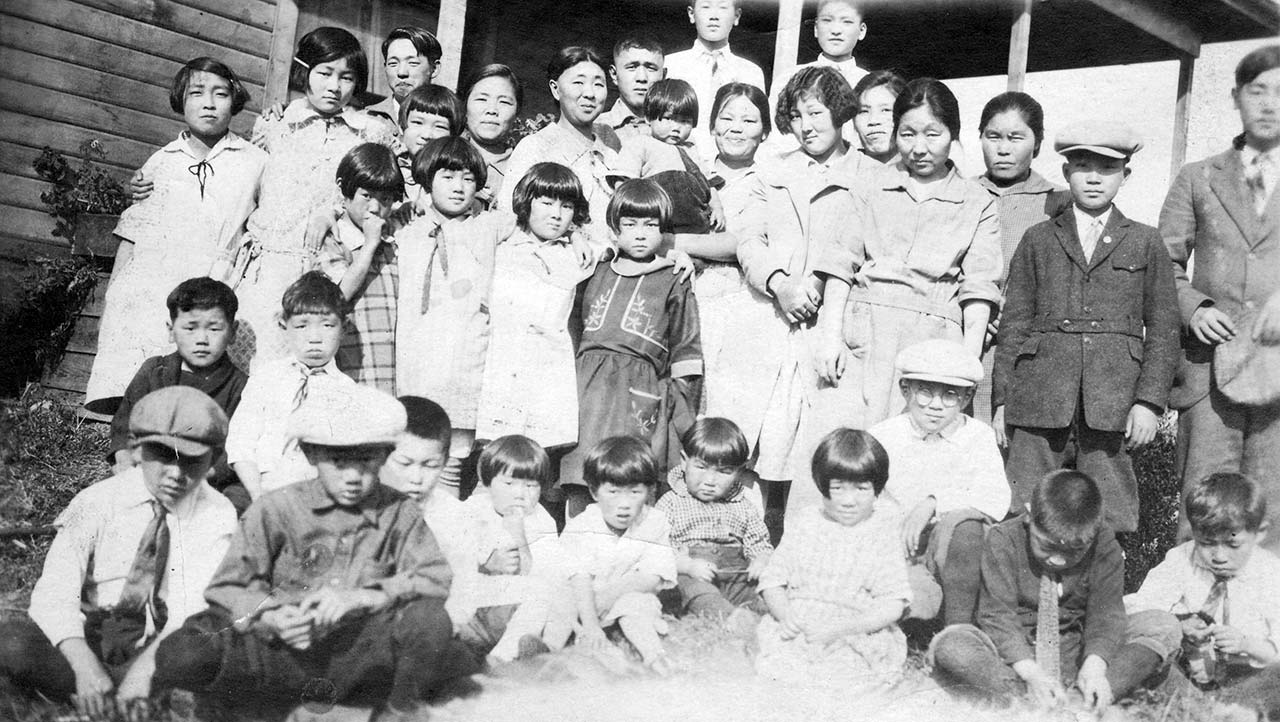
Children of the Green Lake community. Photo Courtesy of the Kumasaka Collection.
For 50 years, the history of the land has remained buried. It might have stayed that way if not for the persistence of Dr. Alicia Valentino, an associate faculty member in the Edmonds College anthropology department. She had been looking for a local site to lead an archaeological field study and first heard about the land in 2016. It took six years, but in conjunction with Edmonds College and North Seattle College, Valentino led a four-week archeological excavation of the land. She conducted a field program that not only introduced students to the archaeological field and lab methods but also revisited an overlooked part of the Japanese community that once occupied this unique piece of property.
“Students are seeing the process of archaeology that they have learned about from the lecture classes they have taken,” Valentino said from the site during the final week of the excavation. “We talk a lot about the processes you do in archaeology, and now they are physically doing the tasks that archaeologists do.”
Valentino and her students spent hours under the July sun surveying and excavating the land by shovel and trowel. They made many intriguing discoveries, including finding the foundations of several buildings and unearthing long-forgotten artifacts from the people who worked on and called the land home.
“We honed in on three areas,” said Valentino, “one of which where we discovered the foundation of the 1957 Kumasaka home. We found the bottom floor buried under rubble that the students had fun digging around. We also explored the subsurface conditions of the garage and shed related to that home.”
For Valentino and her colleagues, the most significant find might have been unearthing the buried layer of what they believed was the community center. While the Kumasaka family resided in the Minidoka War Relocation Camp in Idaho during World War II, the community center burned down. The family never rebuilt the building once they returned to the property. The center had been long forgotten until Valentino and her group unearthed the charred remains of what was once a focal point of life for so many Japanese families.
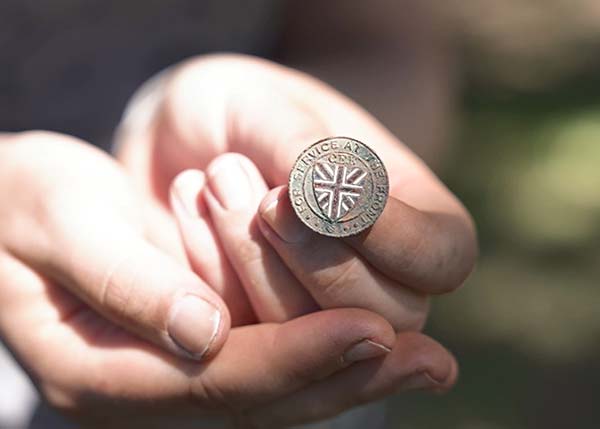 Near the community center, they were able to locate one of the most remarkable finds.
One of the students unearthed a well-intact Canadian World War I service pin. During
WWI, only about 200 Japanese Canadians fought. The hope is that they might be able
to trace back through time and find out who once owned the pin.
Near the community center, they were able to locate one of the most remarkable finds.
One of the students unearthed a well-intact Canadian World War I service pin. During
WWI, only about 200 Japanese Canadians fought. The hope is that they might be able
to trace back through time and find out who once owned the pin.
“It’s (going to be) hard to nail down who it is, but it’s interesting to think that you can find all that out from just a pin,” student Amber O’Quinn said about finding out the identity of the pin’s owner.
The group also found more personal items in the homes and community center. They discovered ceramic bowls, teacup handles, and many unique objects like combs, buttons, zippers, marbles, harmonica parts, and other trinkets.
“These finds help us put together stories about the lives of those who lived and worked here,” said Ashley Pickard, an anthropology instructor and faculty member from Edmonds College. “The material culture we found is very reminiscent of materials that you would find from a house and a greenhouse business. We found a lot of glass, metal, and ceramic pots like terracotta that you might have at home.”
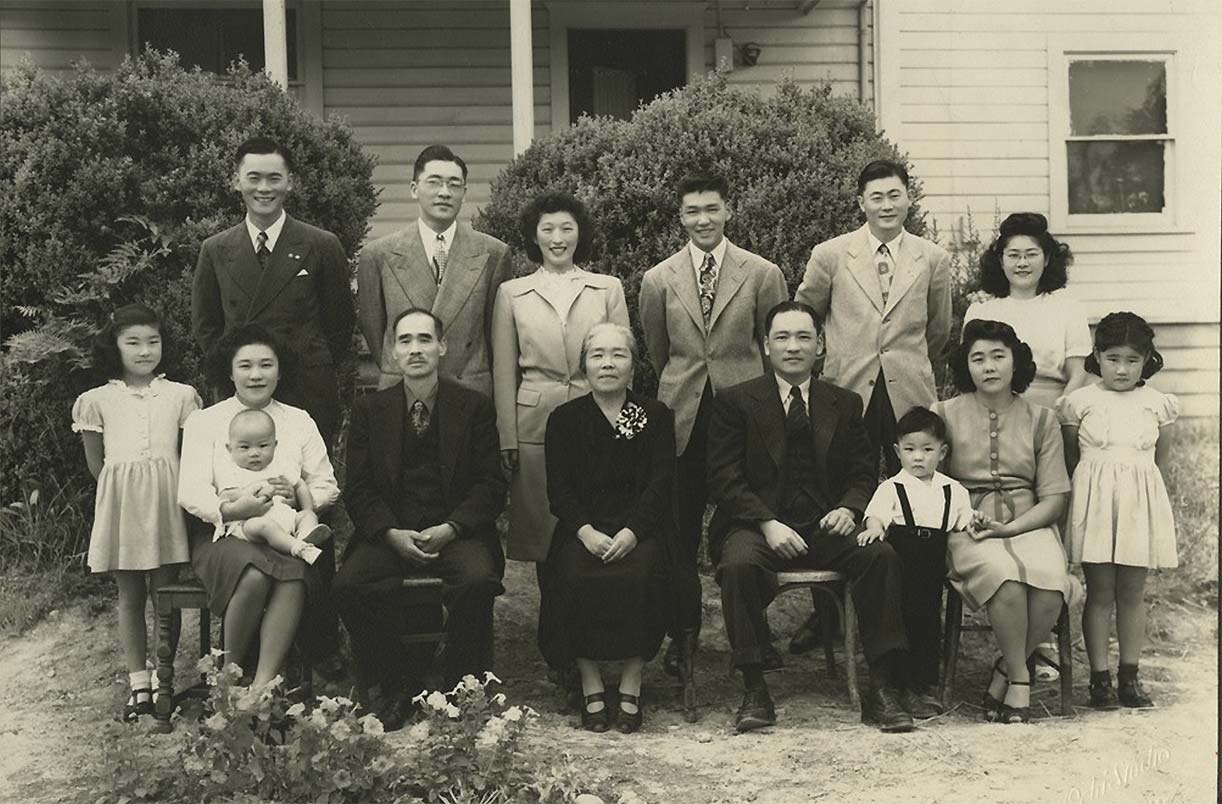
A Kumasaka family portrait. Photo Courtesy of the Kumasaka Collection.
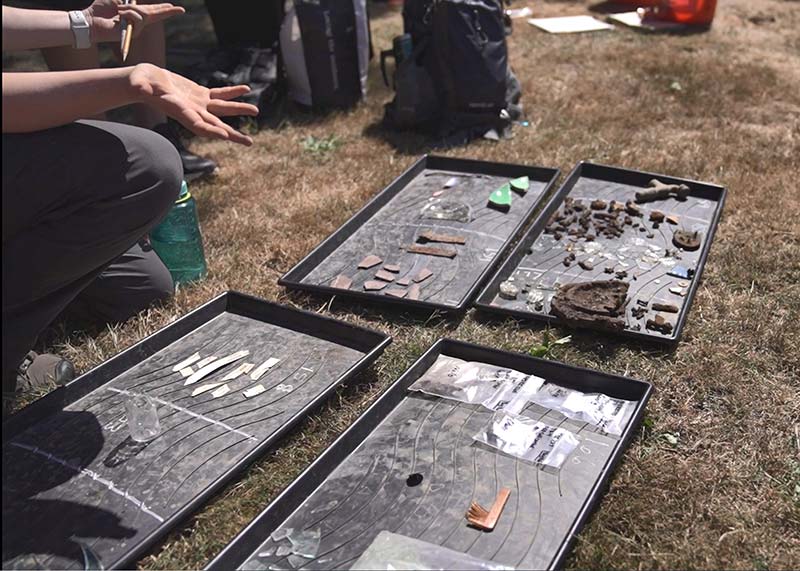
For O’Quinn, the experience of excavating the site has strengthened her resolve to work in the archaeological field. It has also allowed her to dig up the past and celebrate an often overlooked community.
“You get to come out here and dig and do all this physical labor, but then we also get to see the reward,” O’Quinn said. “We’re highlighting the Japanese American community in a way that I don’t think has happened much in Seattle. I think that is really important.
“This field school has ignited my career in archaeology,” she added. “Many of us are looking into cultural resource management type careers and being field techs after this. It’s been a truly wonderful experience.”
Fellow student Allison Theiler added that the convenience of having a local archaeology field study was a big draw for her. The program was open to all interested students from any school, so Thieler, studying anthropology and archaeology at the University of Washington, jumped at the chance to join Edmonds College’s program.
“I knew I wanted to do a field school before I started working in archaeology,” Theiler said. “There are many international options, but those are expensive and a big commitment. When I heard about this one, I was, ‘Wow, it’s local. I can live with family.’ It was just a fantastic opportunity.”
The hope for Valentino is to do another field study next summer. She intends to return to the Kamasuka farm site. It will be another chance for another group of excited students to open doors to the past and reexamine a forgotten time.
“When you’re digging up things and find pieces of plates, you’re like, ‘Someone actually ate off of these.’ It’s really cool just to find things people used to have and use,” Theiler said over the din of I-5 traffic whizzing by in the background.
“You just imagine ‘I have plates like this at home. My mom has these in a nice China cabinet.’ It’s just kind of connecting your experience and life to the things you're finding. It is a really good way to connect with the past and stay in the present.”
Some information for this story was gathered from: Johnson, Jack. Archaeology in Washington, Volume 17: Archaeology of Japanese Americans,
Summer 2017.
–The Story of the Green Lake Gardens and the Kumasaka Family by Alicia Valentino.

